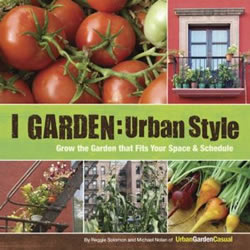Posted on 12 May 2010 by urbangardencasual.com
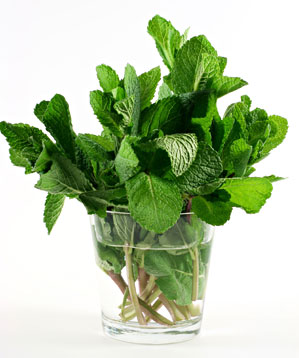 By Mindy McIntosh-Shetter
By Mindy McIntosh-Shetter
The 650 varieties of mints have had a long history.
Pliny a naturalist in the first century A.D. believed that the smell of mint would stimulate the mind and appetite.
He suggested that the head be bound with a crown of mint to help heal the soul and mind.
Pliny, Hippocrates, and Aristotle viewed mint as an herb that would be contrary to procreation. The Greeks on the other hand forbade their soldiers to consume mint because they felt it would provoke a man to love and weaken his courage.
The Middle Ages saw the cultivation of mint for therapeutic uses grow. Wild mint or Spearmint was found in Great Britain in the 17th century.
Mint cultivation started in 1750 and spread to the continent in 1770. During this time period mint was viewed as a “great strengthener of the stomach” as described by the English herbalists Culpeper. In the 1880’s English herbalists and doctors created Family Dispensatory Chests. These chests were like modern day first aid kits and provided drugs and herbs for each village. One of the herbs in this first aid kit was mint.
Even in modern time mint shows up in Read the rest of this entry »
Posted on 01 May 2010 by urbangardencasual.com
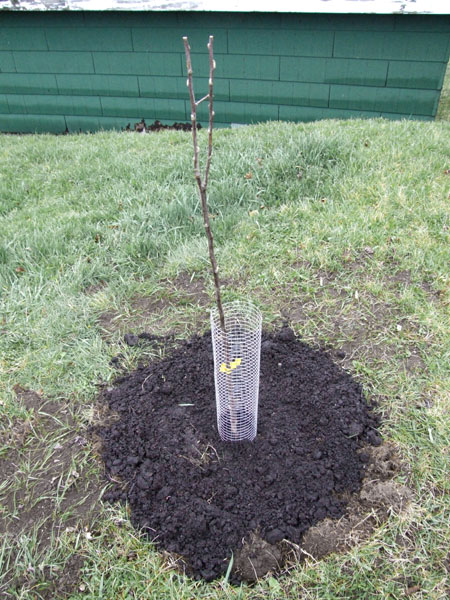 By Sonya Welter
By Sonya Welter
Trees can be intimidating, especially for novice gardeners.
A sapling usually costs $20 to $100–way more than a packet of lettuce seeds or a six pack of pansies–and trees can make a huge impact on your landscape–sometimes literally, if flooding or strong winds blow them over onto your house or car.
It’s worth it to take your time and make sure your trees are planted right.
First, buy the healthiest tree you can, and make sure that it’s hardy for your climate. Bare root trees should be planted as early as possible in the spring.
Potted trees are a little more flexible, but they’re best planted in the spring or the fall, when temperatures are milder (gardeners in very warm climates can plant trees in the winter).
Try to plant you tree as soon as possible after you buy it, but if you can’t, keep bare root trees in a cool, dark location until planting, and make sure Read the rest of this entry »
Posted on 29 April 2010 by urbangardencasual.com
 By Sonya Welter
By Sonya Welter
Trees provide shade in the summer and a windbreak in the winter, and mature trees make the biggest impact for beautifying your neighborhood or boosting your property value.
It’s true that trees are an investment in the future, but many trees grow faster than you might think, and that skinny little sapling you plant today will look lush and established in just a few years.
So how do you choose the perfect tree for your yard?
First, decide what you want the tree for. Conifers like spruce, pine and fir are good for windbreaks or for privacy hedges, since they stay bushy year round. If you want a tall boulevard tree, consider maples, oaks, elms or basswoods.
If you’ve got a tiny urban lot, look for Read the rest of this entry »
Posted on 23 April 2010 by urbangardencasual.com
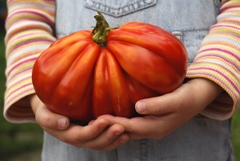 By Mindy McIntosh-Shetter
By Mindy McIntosh-Shetter
My children always add their own “garden.”
When they were very young they always planted in beautiful containers they decorated and took great pride in choosing the flowers and herbs that would showcase their creation.
Then when they got older they always had a little plot of land of their own and when I mean little keep in mind that I “farm” on 1/5 of an acre.
The “farming gene” was one that I wanted to nurture and sought to make sure my children knew where their food came from and how much work it took just to get that cherry tomato or that apple that was in their lunch. When I became an Agriculture Education teacher I realize even more how knowing where our food comes from, how its grown, and the work involved in its production is a lost life skill.
As society moves outward Read the rest of this entry »
Posted on 21 April 2010 by urbangardencasual.com
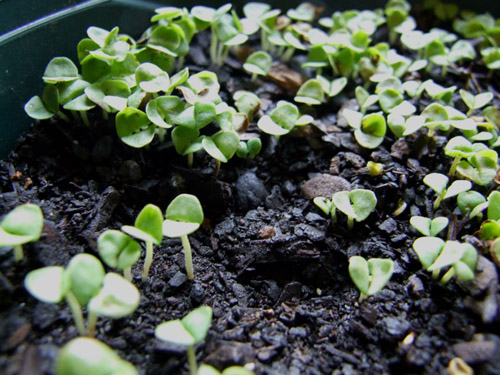 By Sonya Welter
By Sonya Welter
The easiest way to start your garden is with transplants from a nursery, and for some plants this makes sense.
Here in Duluth, Minnesota, and in other cooler climates, the growing season simply isn’t long enough to grow hot weather crops like tomatoes or peppers from seed outdoors, and if you want to grow these vegetables at all, you’ll need to start seeds indoors several weeks from the last predicted frost.
Transplants cost more than seeds, but that way someone else does all the hard work of adjusting grow lights and fussing over humidity levels.
But there are some vegetables that, no matter where you live, should always be started from seed, because they grow quickly or don’t like their roots to be disturbed. It’s also a lot of fun to start some vegetables from seed, because that way you get to go out to your garden every day hoping to see little green leaves poking out through the dirt and reaching for the sky.
Radishes
Radishes are the sprinters of the Read the rest of this entry »
 By Mindy McIntosh-Shetter
By Mindy McIntosh-Shetter By Sonya Welter
By Sonya Welter By Sonya Welter
By Sonya Welter By
By  By Sonya Welter
By Sonya Welter